Pieter Aertsen, Meat Stall
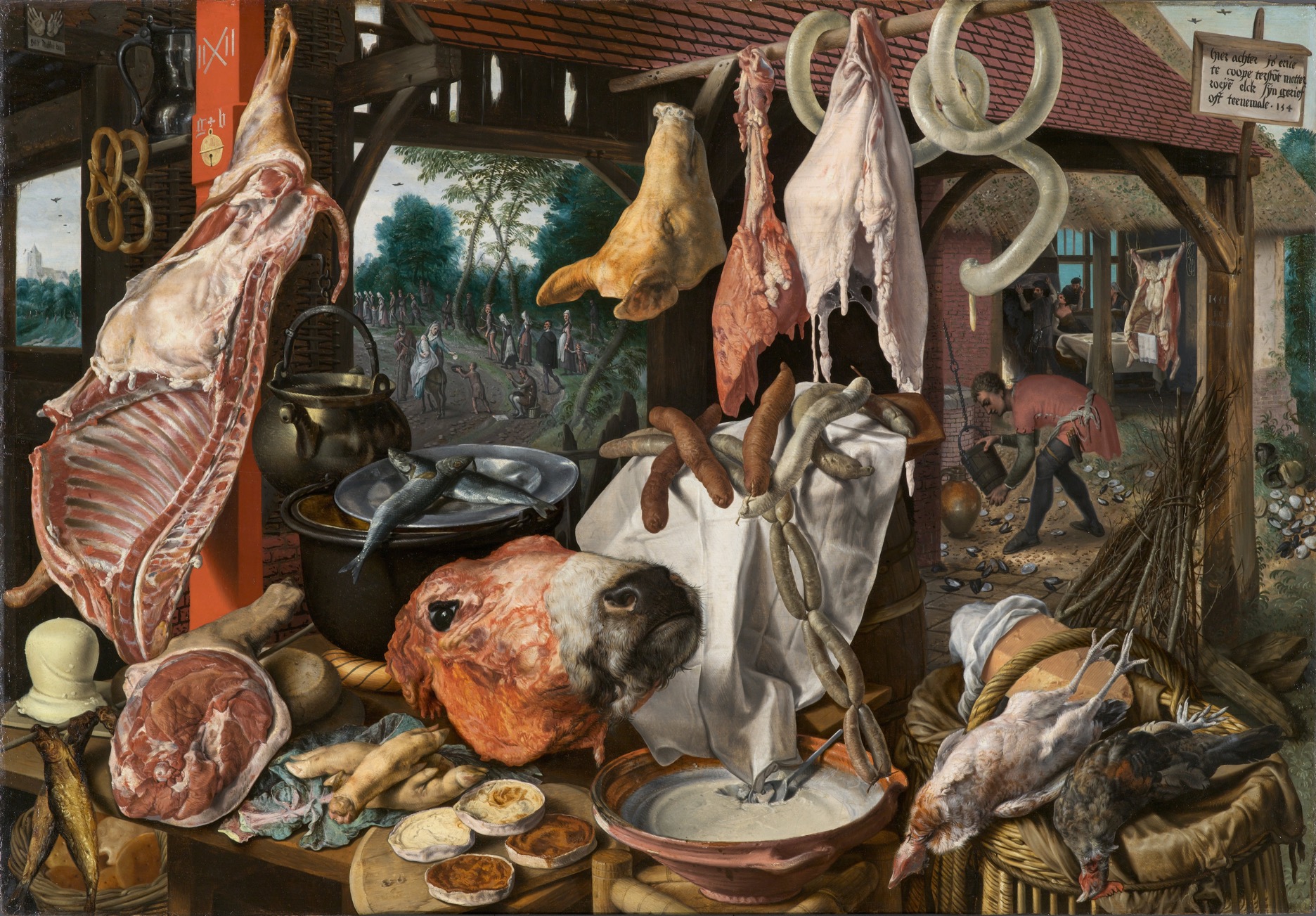
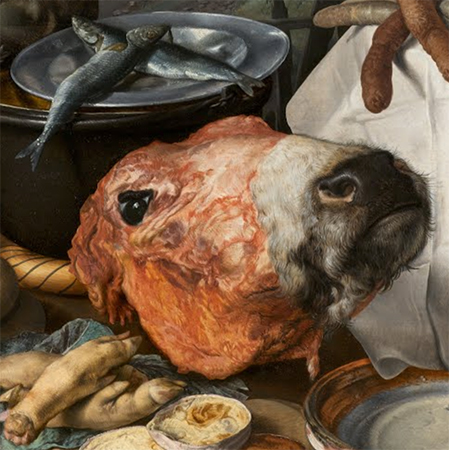
Even if you are not a vegetarian, this painting is bound to come as something of a shock. Anyone accustomed to purchasing meat in the clean, cold corridors of the supermarket—safely wrapped in plastic and utterly divorced from the living animal it once was—may feel the urge to shrink back from the vivid, frontal display of so much raw flesh, much of it with eyes, ears, mouths and tongues still attached.
The partially skinned ox head, in particular, seems to eye the viewer balefully, as if he or she were responsible for its death. You can almost hear the flies buzzing in the air…
Even more surprising, if you look in the background on the left, is a small scene depicting the Flight into Egypt (when Joseph, Mary and the infant Jesus flee to Egypt because they learn that King Herod intends to kill the male infants in the area of Bethlehem). We see the Virgin Mary on her donkey reaching back to offer bread to a young beggar. Saint Joseph follows closely at her side. This charitable scene stands in stark contrast to the bloody abundance of meat in the foreground.
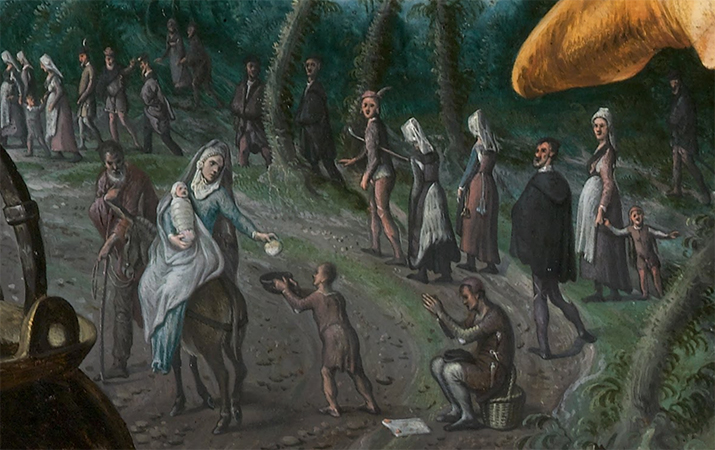
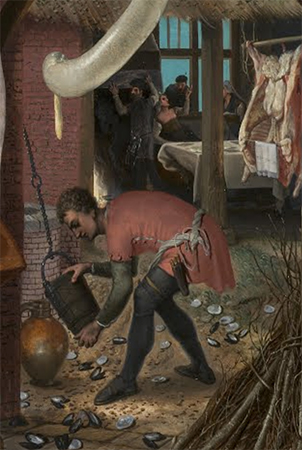
If we look closely though, in the right background, we see a tavern scene that is more in keeping with this feeling of excess in the foreground. Here we see people eating mussels by a snug fire. A great carcass hangs in the same room, and a butcher (we recognize him as such thanks to his red coat, which in Antwerp could only be worn by guild members) appears to be adding water to the wine for his guests. But why would an artist depict meat at all, let alone in such an unsavory way and in combination with a religious scene?
The way of the flesh and the way of the spirit
Many scholars have commented on the bold originality of Aertsen’s compositions, and rightly so. In the sixteenth century, religious or mythological scenes usually occupied pride of place in works of art, while everyday objects were considered mere accessories. In this and other roughly contemporary works, Aertsen has deliberately reversed this formula. He gave all the attention to the accessories, which seem to spill out of the picture and into the viewer’s own space.
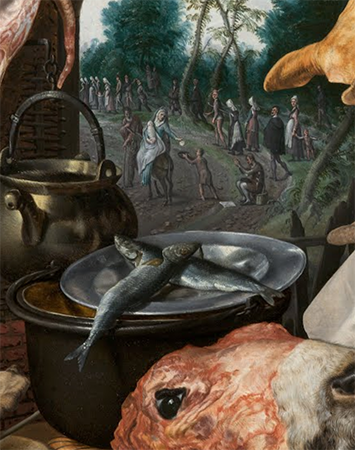
This may be a comment on the arduous nature of spirituality: those who truly seek enlightenment must look hard, and turn their attention away from the things of this world. And indeed, in Aertsen’s picture, the crossed herring on a pewter plate just above the ox’s head—fish was associated with Lent, a period when the faithful abstained from meat—seem to point in the direction of the holy scene in the background, beyond the meat.
Like so many other specialties we take for granted today: landscapes, flower pieces, scenes from everyday life, etc. market scenes were just beginning to emerge as subjects in their own right, independent of paintings that depicted mythological or religious scenes.
Topical concerns
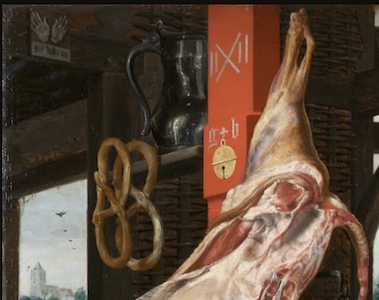
For those familiar with Antwerp’s tangled local politics, there are some highly specific messages embedded in this composition that would have been legible only to them. In the upper left-hand corner is a small representation of two hands—the symbol of the city of Antwerp—and chalked on the post next to it are symbols typical of guild marks belonging to specific individuals, though their identity remains a mystery.
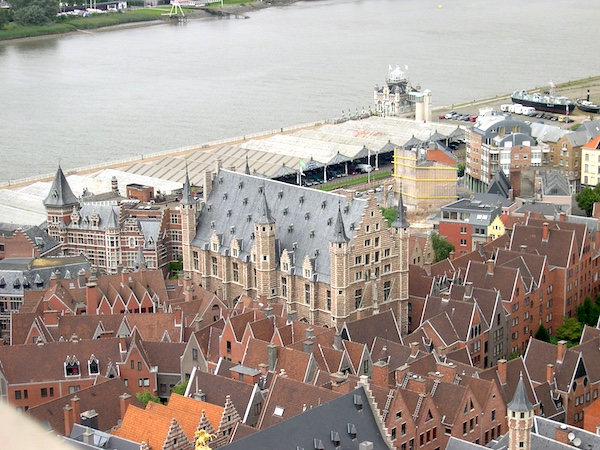
The Butchers’ Guild in Antwerp was a very powerful institution that enjoyed the support of Emperor Charles V himself. It was one of the few guilds with a written charter, and succeeded in having its profession closed to outsiders: there could only be sixty-two officially recognized butchers in the city at any given time, and when a butcher passed away his post would go to his son or other close male relative. Anyone who wanted to buy meat in Antwerp had to buy it from the Vleeshuis, or “Meat Hall,” an imposing building near the banks of the River Scheldt that was rivaled as a landmark only by the Church of Our Lady (now the cathedral of Antwerp), truly a sign of the guild’s power. Nevertheless, the butchers’ influence was coming under increasing attack in 1551: butchers from outside the city had banded together to fight what they perceived as an unfair trade monopoly. They filed a lawsuit that was first overturned, then upheld, then appealed by the Butchers’ Guild in the imperial courts—and the results were still pending when Aertsen painted his striking panel. Meat was a hot item indeed!
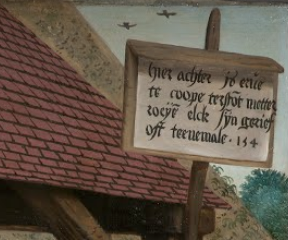
But there is more. At the upper right, posted on top of the meat stall, is a small sign in Dutch that, when translated, reads: “Land for sale out back: 154 rods, either by the piece or all at once.” This text refers to an actual sale of land that took place in 1551, and a controversial one at that. It must have been important to the picture’s original meaning, because the sign appears in all four, almost identical versions of the Meat Stall that Aertsen painted. To make a long story short, the city of Antwerp decided to develop what was then the southeast side of town. Land being in short supply, the city council forced the prestigious order of Augustinian nuns who ran the St. Elisabeth’s hospital to sell their property at a loss. But the city bought too much acreage, so the surplus was sold to one Gillis van Schoonbeke, a notorious real estate developer whose activities were so unpopular that they even caused riots. At one point imperial troops had to be called in to stop the violence.
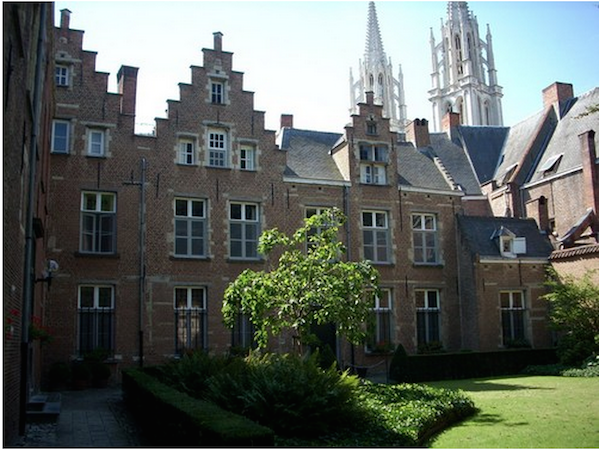
Given this background, the painting with its layered messages—all of which warn against greed and excess—must have seemed emblematic of the rapid social changes overtaking the city, which experienced unprecedented growth thanks to its booming international trade. Traditional groups and values, such as the charitable nuns and their inviolable property, or the venerable butchers and their hereditary rights, were under fire from powerful, wealthy entrepreneurs and the city’s desire for economic growth, a matter of concern for all citizens.[1]
- Dr. Irene Schaudies, "Pieter Aertsen, Meat Stall," in Smarthistory, August 9, 2015, accessed March 31, 2023, https://smarthistory.org/pieter-aertsen-meat-stall/. ↵

